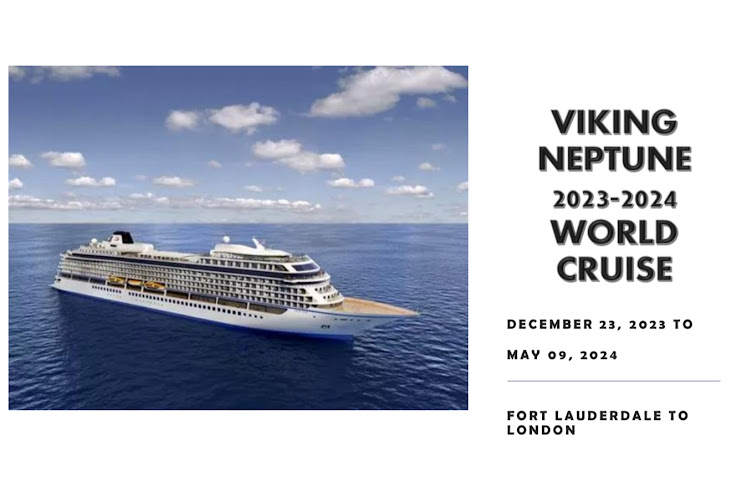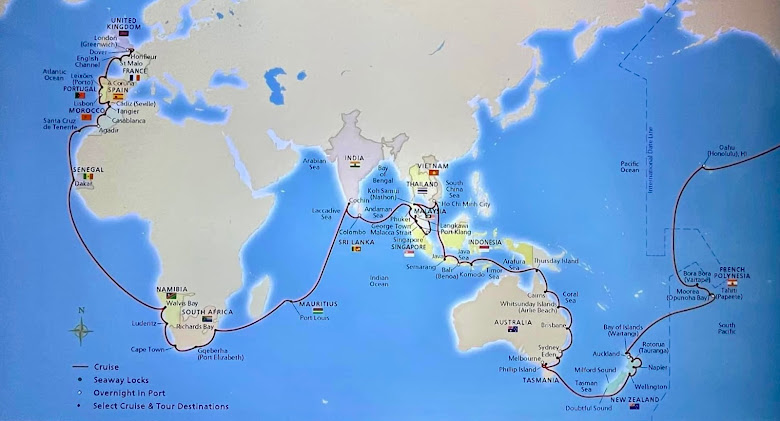We have just spent two days in Lisbon, a magical city. Lisbon is the capital city of Portugal and sits on the Iberian peninsula on the northern shore of the river Tagus. It is a centuries old city with rolling hills, medieval castles, ancient churches and cobblestone streets. The ship was docked at the foot of the oldest original part of the city. In the late 1700s, there was a massive earthquake that destroyed most of the city and most of what we see now is what was rebuilt from that point. There are 220 million people in the world that speak Portuguese, but only 10 million live in Portugal. Most of the rest live in Brazil. Almost everyone in this country speaks several languages.
 |
| View from our veranda |
 |
| Castle that was built in the 11th century |
 |
| Presidential palace |
Since there are so many hills and the streets are so narrow, they have a transportation system of trams or street cars that run up and down the hills. This is an incredible way to see the city as well as get about without breaking your leg walking on the cobblestone sidewalks and streets on the very steep hills.
The façades of the buildings are either painted bright pastel colors or are covered in decorative tiles. The tiles were originally for insulating the buildings against cold and heat. Today they are just decorative as well as functional.
On day one we took the included tour which was on a bus. It was another day of long walks from ship to bus. We walked 2+ miles today. It was cool, almost cold, very windy and threatening rain all day and when we were visiting one of the sites it just let loose. Other than that, we dodged the raindrops. We visited several neighborhoods and traversed the city. We also saw some main tourist sites like the Monastery, the Monument to the Discovers and the Belèm Tower. We had a short stop at an upscale shopping street so we could feel the local flavor. There was also a very lovely memorial to the men who tiled the sidewalks, and to those that continue the tradition. The sidewalk tiles are limestone.
 |
| Monument of the Discoverers |
 |
| Belèm Tower a 16th century fortification |
 |
| Roman aqueduct |
 |
| Memorial |
 |
| Tile workers |
 |
| Shopping square |
The highlight for us was getting to eat a Belèm cake or a custard tart. This is our fourth or fifth time here in Lisbon and every time we’ve been here having the tart is a treat. The crust is thin and flaky and the custard just melts in your mouth. There is nothing like it.
The evenings entertainment was a form of music called Fado, which is Portuguese folk music. A man or woman sings, accompanied by guitar and/or mandolin. The music and the stories are melancholy, singing about love and relationships. It’s not something that I found enjoyable, maybe because we could not understand the words, but we certainly got what the meaning was. Michael really enjoyed it.Day 2 was another exceptional day of touring even though it was chilly and extremely windy. This time we were on a four person tuk tuk. These small vehicles (holds 4 passengers) can go on the narrow streets that run up and down the hills that buses and cars can’t go.
 |
| Tuk tuk |
We happen to have an excellent guide who took us to an overlook where we could see the entire city. We then toured the oldest part of Lisbon before stopping for some local refreshments of ham, cheese and bread. They also had a wine that was green and I don’t know what it was, but I had some of that. We toured some more and then stopped to have some cherry port/Sherry that is only made in Portugal. It tasted like cough medicine.
 |
| Cherry port, yuk! |
 |
| This restaurant was in a 200 year old building |





















